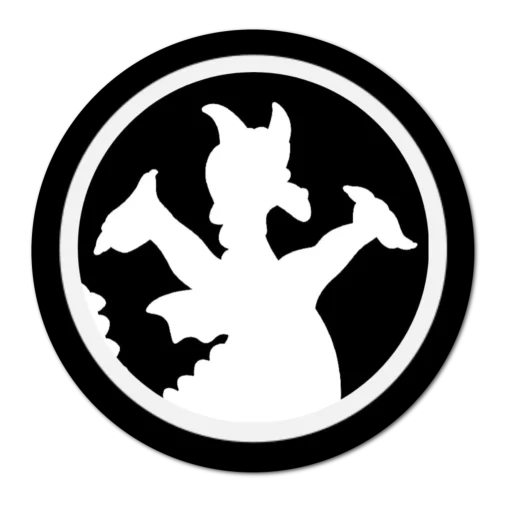(A version of this article was shared with Laughing Place on January 13, 2023.)
Idols. Spinnies. Alternative. Weird. These are but a few of the terms that associate well with Rolly Crump. A long-time Disney artist and designer, this legend helped develop some of the most iconic images we celebrate in Disney Parks – in the United States and across the world.
There’s no turning back! Our tour-du-Crump begins now, in this edition of Disney Legends Spotlight.
A Diamond in the Rough
Roland Fargo Crump was born in February 1930 in Alhambra, California, at a time when animation was still in its earlier days. He grew up in a quiet household with a single mom. In his earliest years, Crump was inspired to draw by watching Walt Disney’s Silly Symphonies shorts – in particular 1933’s Three Little Pigs. He continued to draw throughout high school, and didn’t aspire to attend college. So in 1952 – with no experience and nothing more than a collection of his high school drawings, Rolly Crump managed to find a way into the Walt Disney Studios.
Crump’s first role with Disney was that of an in-betweener artist (artists that fill in the animation gaps between major movements of a character or scene). In addition to in-betweening, Crump served as an assistant animator, contributing to films such as Peter Pan, Lady and the Tramp, One Hundred and One Dalmatians, and Sleeping Beauty, among others. Crump learned from one of the best, as an assistant to one of Walt Disney’s “nine old men”, Eric Larson.
In his first few years at Disney, Crump kept a low profile. According to a 2018 Los Angeles Times interview piece, Crump said “All I did was absorb. I watched how everyone reacted to Walt, and the strengths and the weaknesses of the different guys. I studied Walt Disney and what it was like to work with him…”
Aside from Crump’s Disney work, he designed quite a collection of satirical psychedelic counterculture posters in the early and mid-1960s. While at Disney, Crump was not shy about displaying his side work. Fortunately for Crump, Walt was very open minded about his alternative creativity!

Working with Walt
Crump has been described by his earlier Disney peers as “a diamond in the rough.” His drawings lacked some of the refinement of senior artists (and now Disney Legends) Claude Coats and Marc Davis. Still, there was whimsy and energy in his creations, and Walt could always see the potential in his artists.
In 1959, Crump transferred over to show design at WED Enterprises (now Walt Disney Imagineering). It was here that he became somewhat close to Walt (or “the old man” as Crump fondly remembers him).
While with WED, Crump helped design several of Disneyland’s attractions and shops. Here are a few of his greatest Disneyland hits.
Walt Disney’s Enchanted Tiki Room
The genesis of Walt Disney’s Enchanted Tiki Room lies not in a show, but as a restaurant. Walt originally conceived of an idea where people could eat while being serenaded by birds up above. According to Crump, “Walt said, ‘If we’re going to have people waiting to go into this restaurant, I don’t want people standing in line. Design some tikis that talk to people while they stand in line.’ That was my assignment.” So Crump went to work designing several tikis that could socialize with guests while they waited outside the restaurant for their turn to dine.
But designing the tikis was only half the job. When Crump wandered over to the model shop to approach in-house sculpting master Blaine Gibson about fleshing out his tikis in three dimensions, Gibson said no, citing significant time constraints. When asked who could sculpt the tikis, Gibson said to Crump, “You will.” Well that was that, and Crump went to work sculpting several tikis out of clay, using a plastic fork he got from the WED commissary. Talk about making something out of nothing!
Walt ultimately decided his Tiki Room would function better as a show than a restaurant (albeit in a setting where guests could happily bring a drink or a snack with them). Crump’s tikis made it to the show, residing primarily outside in the area where guests wait for the next showtime to begin.

Nearby to the Tiki Room stands another Disneyland classic – Adventureland Bazaar. This middle-eastern market was primarily designed by fellow Disney Legend Harper Goff. It resembles a similar marketplace from the 1942 film Casablanca – a film for which Harper Goff designed some of the sets. Crump assisted in the design of this indoor/outdoor marketplace, using his flair for dramatic imagery in rounding out Goff’s streetside mercantile.
“it’s a small world”
One of the most transformative moments in Disney Parks history came in 1963-1964. The upcoming New York World’s Fair (and in particular, several of its sponsors) was in need of exhibits. With Disneyland’s success running strong, Walt became a popular guy in New York. Never one to say no to a good opportunity, Walt and his staff took on the ambitious task of creating four world-class attractions within one year. During this period of furious creation and innovation, Disney created four unforgettable attractions for the fair – Carousel of Progress, Great Moments With Mr. Lincoln, Ford Magic Skyway, and “it’s a small world.”
Rolly Crump assisted with several of the attractions, but most of his efforts went to supporting “it’s a small world.” While this classic Disney attraction is generally considered to be Mary Blair’s masterpiece, Crump helped design props for several show scenes, and created the “weenie” for the attraction – the Tower of the Four Winds which stood playfully outside the entrance.

Crump dramatically recounts the moment when he first laid eyes on the fully constructed, full-size tower (which was of course much larger than his design model). “I hated it. I was really unhappy with it. It was something that was really special to me, as far as being a kinetic sculpture. I drove Walt down to show it to him and he took one look at it and said, ‘Well Roland, what do you think?’ I said, ‘I think it’s a piece of crap.’ He said, ‘It can’t be a piece of crap, it cost me $200,000!…’” In the end, the tower was shipped to New York and constructed for the fair. According to Crump, “The people visiting the New York World’s Fair had no idea that the pipes were twice the size that I had planned, and it was actually a popular attraction.”
After a hugely successful performance at the World’s Fair, “it’s a small world” was disassembled and moved to its permanent home in Disneyland. Adding a distinctly Disney touch to the attraction, Crump designed the Small World Clock on the building’s façade, which proudly wags at guests outside.

The now-famous clock almost didn’t come to be. When Crump and his supervisor Dick Irvine showed the clock design to Walt, the boss said, “That’s good.” But Irvine countered with his feelings on the matter, stating “It doesn’t have that European flavor. I’m having Marc (Davis) redesign it.” According to Crump, “Walt looked Dick straight in the eye and said, ‘I like it the way it is.’ The old man backed me on so many damn things. That’s why so many people didn’t like me.” Once again, Walt always had an eye for talent.
Haunted Mansion
The story of Disneyland’s Haunted Mansion is a long and twisty tale for another time. It was first advertised in 1961, for a 1963 opening. While the exterior of the Mansion was indeed completed in 1963, the design of the attraction itself was a long and lingering process (thanks in part to Disney’s involvement in the World’s Fair). The Mansion finally opened in 1969, three years after Walt’s death in 1966.
A large part of the original Mansion concept was dubbed a “Museum of the Weird.” Crump was primarily responsible for the ideas present in this never-built concept. His drawings increasingly emphasized the macabre — a coffin that doubled as a grandfather clock, men made out of candle, talking chairs, a mirror with a face, and man-eating plants were just a few of Crump’s whimsically creepy ideas.
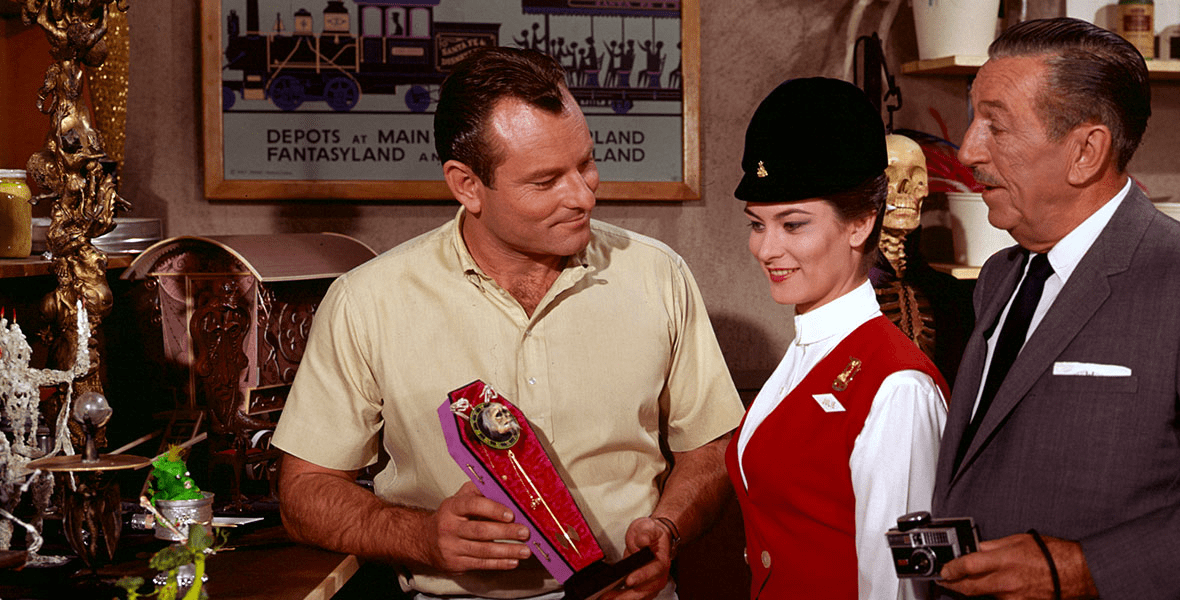
Prior to presenting his ideas to Walt, Crump’s fellow artists and designers warned him that his ideas would be “too weird” for Walt. In fact, in preparing all of the different designers’ ideas for Walt’s review, Dick Irvine again attempted to downplay Crump’s creations. Irvine stuck Crump’s designs in a corner of the room and never offered them up to Walt for review. It was only when Walt noticed them in the corner, and inquired about what they were, that Irvine reluctantly showed him Crump’s designs. After about ten minutes spent reviewing Crump’s drawings, Walt got up and left the room, seemingly unimpressed.
The rest of this story is best told by Crump himself. When he arrived at WED the next morning, he found Walt sitting in his chair. “The first thing he said to me” recounted Crump “ was, ‘You son of a bitch.’ All that stuff you showed me yesterday? I couldn’t sleep!’” Shortly thereafter, Walt announced to the staff, “We have a Museum of the Weird now.” The plan, says Crump, was to “collect weird things from all over the world and bring them to Disneyland.” Unfortunately, Walt died while the Mansion was still in design. Others who succeeded Walt were not so much in favor of Crump’s Museum of the Weird concept. The Mansion was completed without the Museum, though several of Crump’s designs made it into the final product, including the faces woven into the iconic purple wallpaper.
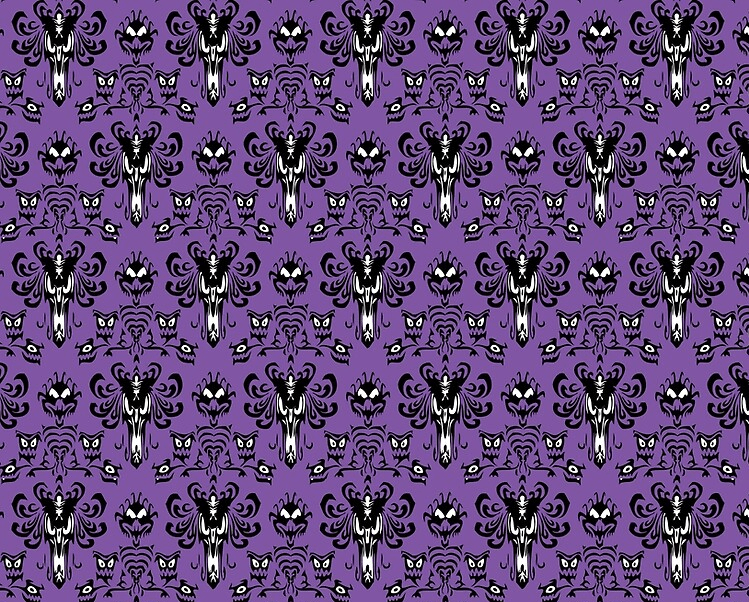
Moving Forward
Even after Walt’s death, his inspiration lived on at WED, as well as in the Disney Studios. Both before and after his death, Walt’s spirit of progress always pointed toward the future. With the future comes the promise of a better tomorrow, and that would become Crump’s next big project.
“Tomorrowland: A World on the Move!”
One of the final projects Walt touched was Tomorrowland’s 1967 update, dubbed “A World on the Move.” Crump is heralded as co-leading what many consider to be Disneyland’s greatest version of Tomorrowland, a sort of mod-like vision of future-past. According to The San Bernardino County Sun “The new Tomorrowland will demonstrate that tomorrow’s world can be built now.” The paper also noted that “It will be a unique showcase for industry’s accomplishments through imaginative applications of current knowhow.”
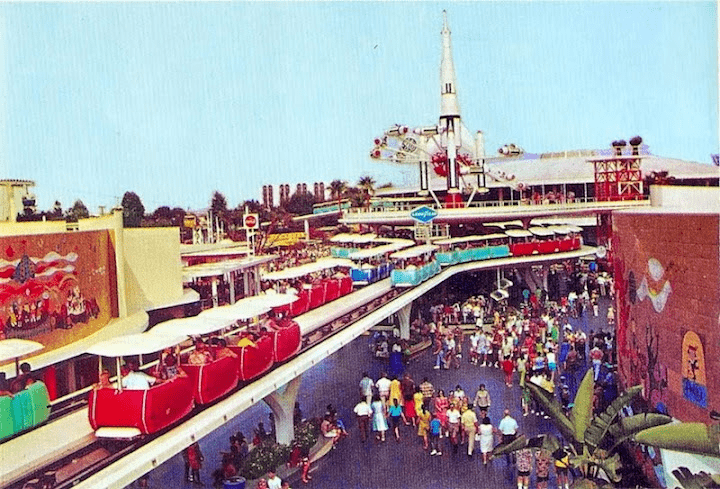
This major Tomorrowland update introduced new attractions that brought the ever-challenged land up to speed, adding the World’s Fair favorite Carousel of Progress to Disneyland. Crump’s team moved Tomorrowland further into the future, upgrading Flight to the Moon into Rocket to the Moon. They also transitioned away from walk-through through exhibits, inviting guests to participate in technology with attractions like Adventure Thru Inner Space and the PeopleMover.
Walt Disney World and Epcot
Rolly Crump assisted in the development of many aspects of Walt Disney World’s Magic Kingdom, but he was increasingly frustrated that Walt’s vision and magic were no longer present in the Disney designs. He left Disney in 1971, before Magic Kingdom was complete.
While away from Disney, Crump consulted on many non-Disney projects, including Busch Gardens in Florida and California, Knott’s Berry Farm in California, the ABC Wildlife Preserve in Maryland, and Ringling Brothers & Barnum and Bailey Circus World, among others.
Crump returned to WED in 1976 and assisted with some of EPCOT Center’s earliest components, including The Land and Wonders of Life pavilions. Once again frustrated with what he perceived as a lack of vision, Crump left Disney again in 1981, before EPCOT opened.
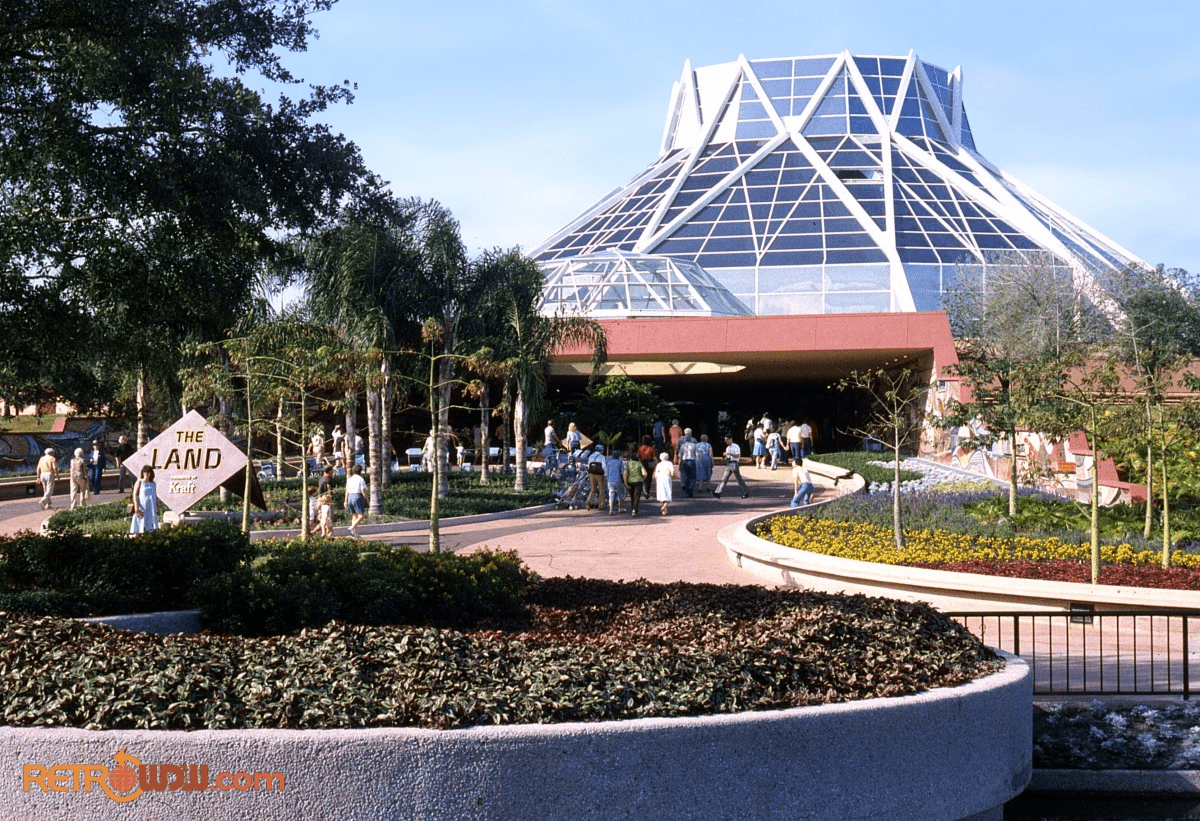
While on his second hiatus from Disney, Crump launched his own design firm, the Mariposa Design Group, consulting on an array of themed projects around the world, including an international celebration for the country of Oman.
In 1992, Crump returned to the former WED Enterprises (now called Walt Disney Imagineering), as Executive Designer. In this role, Crump redesigned The Land pavilion – which he originally designed in the late 1970s. Aside from The Land, Crump also led the transformation of EPCOT’s CommuniCore into Innoventions.
A Well Earned Rest
Rolly Crump retired (permanently) from Disney in 1996. He was named a Disney Legend in 2004. In 2009, Crump was honored with a window and sign on Disneyland’s Main Street, naming him as the “assistant to the palm reader” of Fargo’s Palm Parlor. This title celebrates Crump’s “weird” designs, and the parlor name is a nod to Crump’s middle name, Fargo.
In 2012, Crump published his autobiography – It’s Kind of a Cute Story.

Rolly Crump enjoyed a legendary Disney career spanning five decades. During his time, he created some unforgettable imagery that will forever live in the hearts of Disney fans worldwide. Crump’s off-beat sense of humor perfectly complimented his artistic talents, making him one of the premier creators in the history of Disney Parks.
Thanks for weirding out with this off-the-wall Disney Legend. If you’d like to reach out with a comment, please do so on social at: Instagram Facebook Twitter
Follow along here for additional articles in this series. We’ll continue to highlight more of the extraordinary people who have shaped Disney’s storied history.
Sources:
Disney D23 Legend page – Rolly Crump
It’s Kind of a Cute Story – Rolly Crump and Jeff Heimbuch
The American Experience – Rolly Crump – PBS/Sarah Colt
“Next Stop, Tomorrowland!” Walt Disney’s Future in 1967, Lucas Seastrom, Walt Disney Family Museum
